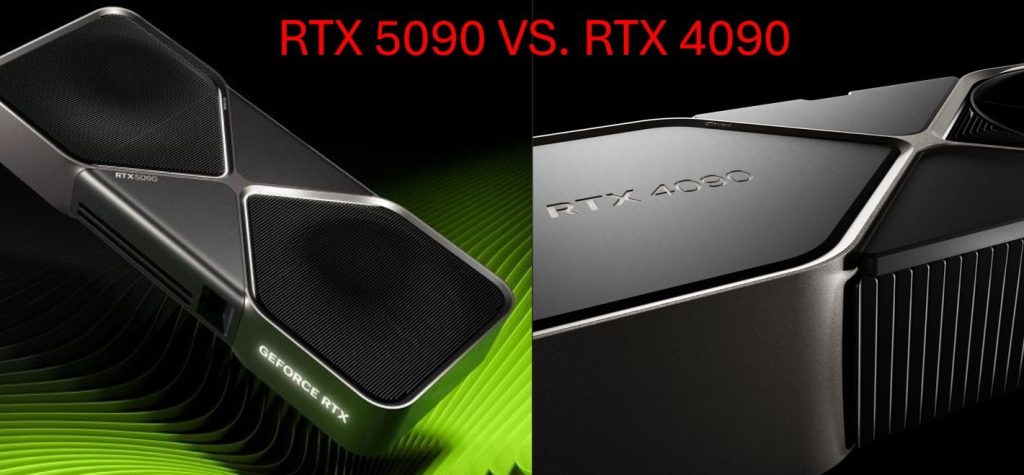Nvidia’s highly anticipated GeForce RTX 5090 Founders Edition is set to launch later this month, and first reviewers already had the opportunity to examine its design and compare it to its predecessor, the RTX 4090. While performance benchmarks and real-world testing are still some time away, early analysis provides insight into Nvidia’s engineering advancements and strategic design choices.


One of the most striking differences between the RTX 5090 and the previous generation is its revised packaging. Nvidia has moved away from the familiar Founders Edition RTX 40-series box, opting instead for a more compact, bone-shaped gray cardboard enclosure housed within a larger, standard brown outer box.
The external packaging prominently displays Nvidia’s marketing tagline: “Inspired by gamers. Enhanced by AI. Built by Nvidia.” Apparently, this messaging hints at the increasing role of artificial intelligence in modern GPU architectures and gaming technology.




Inside the package, Nvidia includes an updated power adapter that supports the refined 12V-2×6 connector, a subtle yet important evolution of the 12VHPWR standard. While the 12V-2×6 maintains the same fundamental structure, it features shorter sensing pins and slightly longer conductor terminals. This modification ensures power delivery stability while offering full backward compatibility with existing 12VHPWR cables. Users will require either four standard PCIe eight-pin power connectors or a compatible 12V-2×6 cable to power the card.
A significant engineering feat is the RTX 5090’s redesigned form factor. Although it retains the same width and length as the RTX 4090, it is notably slimmer, fitting into a two-slot design instead of the three-slot bulk of its predecessor. This compact build is a major advancement, as Nvidia has successfully condensed its flagship GPU’s power without sacrificing cooling efficiency or thermal performance.
Table: RTX 5090 vs RTX 4090 specs compared
| RTX 5090 | RTX 4090 | |
|---|---|---|
| NVIDIA Architecture | Blackwell | Ada Lovelace |
| DLSS | DLSS 4 | DLSS 3 |
| AI TOPS | 3352 | 1321 |
| Tensor Cores | 5th Gen | 4th Gen |
| Ray Tracing Cores | 4th Gen | 3rd Gen |
| NVIDIA Encoder (NVENC) | 3x 9th Gen | 2x 8th Gen |
| NVIDIA Decoder (NVDEC) | 2x 6th Gen | 1x 5th Gen |
| Memory Configuration | 32 GB GDDR7 | 24 GB GDDR6X |
| Memory Bandwidth | 1792 GB/sec | 1008 GB/sec |
Nvidia has also introduced a completely reworked cooling system for the RTX 5090. The GPU now utilizes dual flow-through fans that draw in cool air from below and expel it upward into the case. Unlike the RTX 40-series Founders Edition models, the RTX 5090 eliminates the rear exhaust, instead opting for strategically positioned ventilation slots on either side to create a controlled airflow boundary. This ensures that warm air is efficiently expelled without recirculating within the system, a crucial factor for high-performance PC builds.
Internally, the printed circuit board (PCB) of the RTX 5090 is now centrally positioned within the GPU, encased by large heat pipes that are actively cooled by the dual flow-through fans. This innovative design enables Nvidia to certify the RTX 5090 as a small form factor (SFF) GPU, making it a viable option for compact cases without requiring major trade-offs in performance. Additionally, the power connector has been relocated to an angled position on the side of the card, simplifying cable management and improving compatibility with tighter case configurations.


In terms of connectivity, the RTX 5090 features three DisplayPort 2.1b ports and one HDMI 2.1b port. Interestingly, Nvidia has reversed the orientation of these ports, meaning users will need to adjust their cable management if they are accustomed to a specific setup. While a seemingly minor detail, this change could impact those with custom-built cable routing solutions.
Visually, Nvidia has refined the aesthetic of the RTX 5090. The card sports a slightly darker gray metal housing compared to the standard RTX 40-series Founders Edition models, but it is not as deep black as the RTX 40-series Super variants. Additionally, the signature white LED lighting remains present, illuminating the top and side of the card when powered on.
Although in-depth tests are not available yet, some reviewers already demonstrated how the RTX 5090 fits into small form factor cases.
From a broader market perspective, the RTX 5090 represents a significant leap in GPU technology, not just in raw performance but in efficiency, cooling innovations, and AI-driven enhancements. With the increasing demand for AI acceleration in both gaming and professional workloads, Nvidia’s architectural refinements suggest a clear shift toward more power-efficient yet computationally robust graphics solutions.
The reduction in size without compromising power efficiency is another major milestone. This means that Nvidia is committed to bringing high-end GPU capabilities into more compact and mainstream PC builds. The RTX 5090’s design choices balance power, thermal management, and user accessibility.
Written by Vytautas Valinskas





